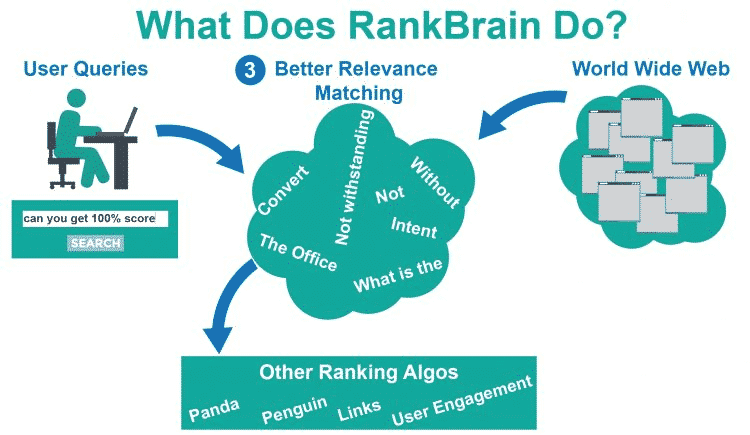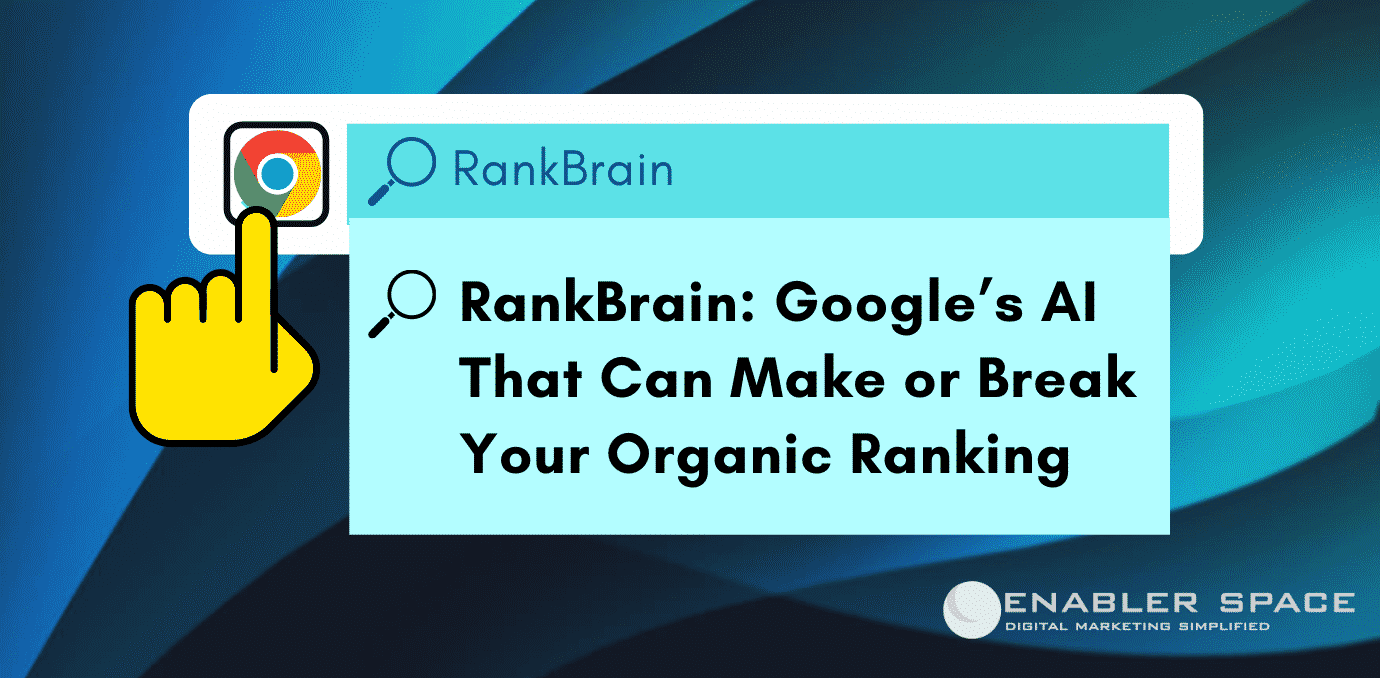SEO is constantly changing and Google keeps updating their ranking factors. It’s almost impossible to keep up with what’s going on. And although RankBrain is not a new algorithm like Google’s Bert at the time this article was published – it’s still an important ranking factor.
What is RankBrain?
RankBrain is basically artificial intelligence that improves search results and improves our search queries. Yes, it learns. And yes, it’s a machine learning system. Maybe you’re like me, and it takes a little more to get a better understanding. Essentially it takes queries that are difficult to understand and relates them to previous searches. It even bases and sorts them on intent and end results, or existing searches. This is what enables Google to provide accurate results for even brand new, never been seen, search terms. Why? You may ask. To satisfy their users and provide them with the most relevant results regardless of how difficult, different, or even long the search term is.

Understanding More About RankBrain
It isn’t just about matching text every time you type in something to search. The point is that it learns to connect search terms it has never encountered with ones it has seen before. One of the most common examples used to explain this is searching for TV shows. If you’re anything like me, you like to have something to watch when you’re having your evening meal and winding down after a long day. So, as you’re preparing your dinner, you (or I) type in “best Netflix shows”. Or maybe you type it in a little differently like best shows on Netflix, good Netflix shows, what are good Netflix shows, or even all time best Netflix shows.
RankBrain knows that each of these queries is essentially searching for the same thing, no matter how it’s phrased. The intent behind all those search query variations is that the searcher is looking for a good show to watch.
What Does It Want To Do?
RankBrain wants, if a non-living entity can want anything, to please users. It does this by determining if you clicked on a search result which it provided and spent a lot of time on that page, orrrrrr if you left that page to go look at a different result. If you spent more time on a search result that it provided, RankBrain will give that site a boost so that it shows up higher on the SERPs (Search Engine Result Pages). On the other hand, if you have a quick look at the site and hit the back button or close that tab, it can choose to decrease that pages’ ranking. This gives a chance for other potentially more helpful sites to appear higher up.
Essentially, RankBrain looks at a website’s organic CTR (Click Through Rate), time spent on the site, bounce rate, and pogo-sticking (an awesome term that just means going into a page and ‘bouncing’ out once you see it’s not what you were looking for). Another SEO blog with a whole bunch of acronyms, click on our Glossary of Digital Marketing Acronyms for 2020 if you could use some assistance getting through them all.

Optimizing UX/UI for RankBrain
Now that we’ve gained a better understanding of what it is and how it works, let’s get into the nitty-gritty. There are many ways that you can optimize your website for RankBrain, but we’re only going to focus on a couple of things. UX/UI, otherwise known as user experience and user interface. Remember when we said RankBrain rewards sites that people spend more time on? Obviously, if you have an awesomely designed website, good conversion, and provide epic user experiences, it’s going to reward you with a boost to your ranking. Let’s use an example, imagine a user searched for something and came up with your website. If the design is well done and they have a great experience (i.e. find what they’re looking for easily), they’re bound to spend more time there rather than pogo-stick back out. Good for your ranking!
Hold up! Is that it? No that’s not it. The user experience is basically what happens when they interact with your website. It includes all they see and do, and also their emotional reactions. Again, hold up! How can AI measure an emotional reaction?! RankBrain looks at a few things like mobile-friendliness, quality content, and page speed. Mobile-friendliness and page speed are easy enough to understand, but quality content is a little more abstract. Google cares about the readability of the content you upload onto your website. It reads and scores your content according to a readability scale. This can include anything from grammar and spelling to the use of active vs passive voice. The best way to optimize for RankBrain is then to make sure that you have “enough” satisfying high-quality content that’s made for your target audience.
There’s so much to consider!
Google isn’t going to stop updating and improving its algorithms any time soon. The good news is that we can optimize for RankBrain. Do keyword research that includes the intent behind each keyword. Are users looking for information, recreation, or to make purchases? Then, make awesome content that is relevant for that keyword. And one more time, don’t forget to optimize! If you’d like more information, or some help getting started on your optimization, contact our digital enablers and let’s get started!

